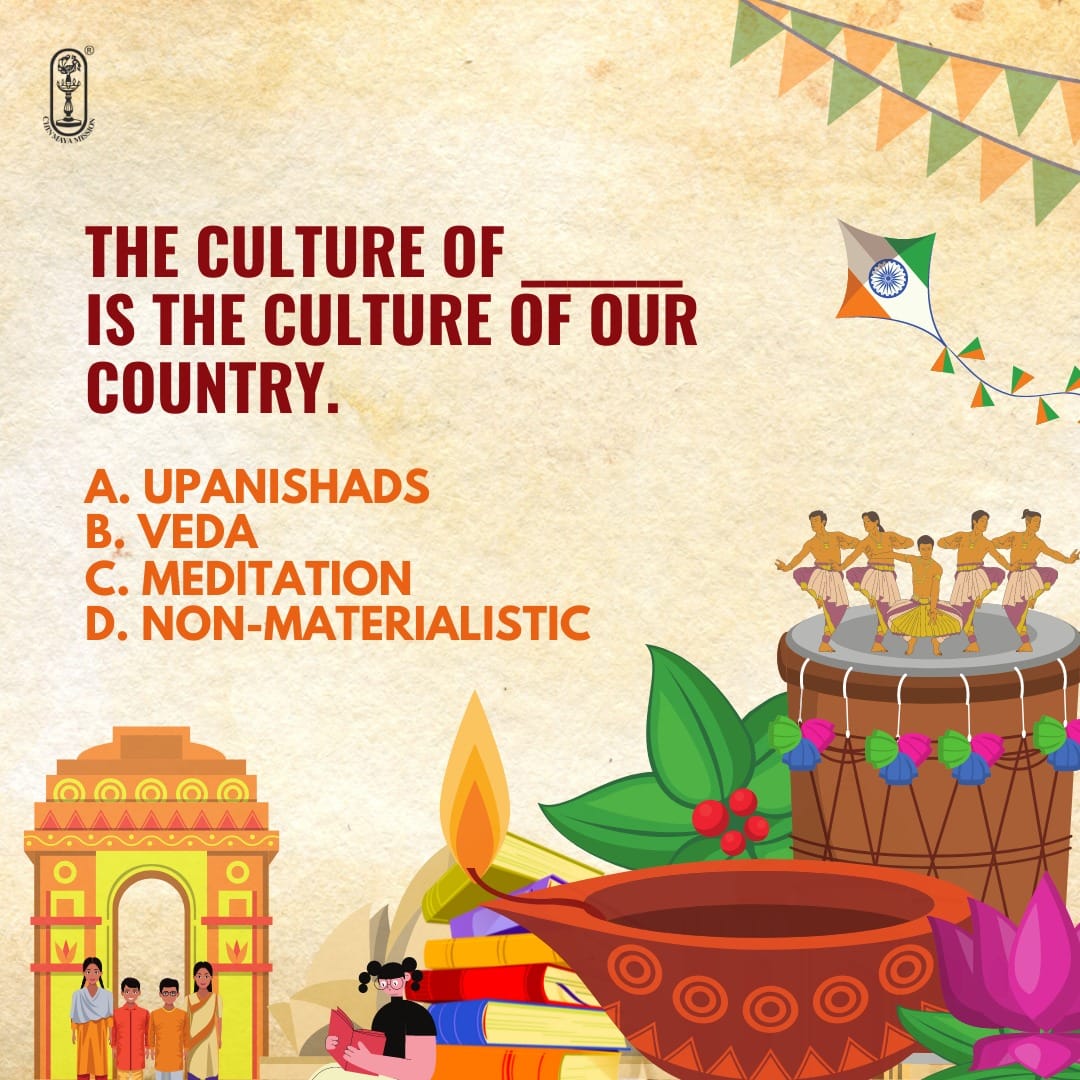The Six Systems of Philosophy in India - 1. Swami Krishnananda.
==============================================================
============================================================
Thursday, May 05, 2022. 06:00.
(Spoken on May 8, 1997)
==============================================================
What we consider as a school of philosophy is a system of investigation into the ultimate cause and meaning of any thing or event. The essential feature of philosophical investigation is that it goes to the root of the matter—what are the causative factors behind the occurrence of an event or the appearance of any form, sentient or insentient. There are various attempts in this direction, carried on both in the East and in the West.
We have in India the famous six systems of philosophy known as Nyaya, Vaisheshika, Samkhya, Yoga, Mimamsa and Vedanta. We may say that these six represent a kind of gradational advance in the vision of things, and one is not supposed to contradict the other. The higher vision may supplant and supersede the vision that is a little lower, but the lower is not rejected by the higher. Therefore, it would be an erroneous approach on the part of any deep thinker to imagine that schools of thought which vary are self-contradictory. They are facets of perception, and there can be any number of facets and phases in the perception of anything whatsoever.
Just as we have the well-known six systems of philosophy in India, we may note that in the West also, six great thinkers arose, among many others. But these six systems in the West cannot be regarded as a gradational ascent, as it is in the case of the schools in India. They are independent philosophical schools, standing by themselves, though as a student of the history of philosophy, we may see a kind of sequential advance that is made in some way or the other.
For instance, in ancient times, Plato and Aristotle form one group of thinkers; in the medieval period, St. Augustine and St. Thomas Aquinas go together; and in the modern period of Western thought, we have Kant and Hegel. I was reminded of this wonderful similarity in comparison with the schools of thought in India.
All these systems—Nyaya, Vaisheshika, etc.—were originally written down in very short, pithy notes, called sutras. In those days when these systems were initiated, there were no large textbooks. Everything had to be memorised, and in order to keep in memory the essential foundational features of any particular school of thought, the originators put them in brief, knotty sayings, called sutras.
Nyaya Sutra and Vaisheshika Sutra confined themselves to the ancient system of physics and logical induction and deduction. The Nyaya is primarily concerned with syllogism, including inductive processes and deductive processes. The Vaisheshika is pure physics, enumerating the categories of ultimate realities, considering that there is a multitude of realities, or manifold realities. We can note how the thought advances. There is logical argumentation to establish the principle of the multitude of realities, as a sense of perception would reveal, and intellectual arguments would confirm.
The Samkhya is of a different nature. There are not many realities for Samkhya. It also has its own logic. Every school of thought has its own logical system to establish the validity of its proposition. While many realities are posited by the Nyaya and the Vaisheshika, only two are recognised in the Samkhya. The entire experience, cosmic or individual, is explicable through the interaction of two realities: consciousness and matter. There is nothing anywhere except these two things. There is a knowing individual, a consciousness that is aware, and an object of which consciousness is aware. The Samkhya has its own terminology. The object of perception, which is inert in its nature, is by Samkhya designated as prakriti, the matrix of all things. The knowing principle, consciousness proper, is called purusha. Purusha does not mean ‘man'. It is only a way of putting things for the purpose of explanation. It means the primary intelligence which observes, interprets, and comes in contact with the matter of the universe.
To be continued ...
================================================================






Comments